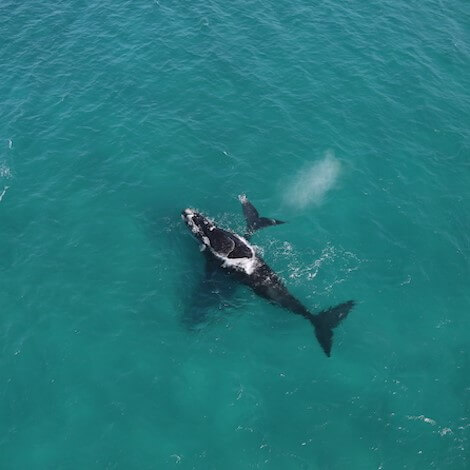Active
Popular
Desert Adaptations
 Pru Allison
Pru Allison
 December 10, 2018
December 10, 2018
Regular followers of our updates will have seen the term ‘desert-adapted’ bandied about quite freely. We use it to describe those animals who have managed to find a way to exist in an arid desert environment that’s quite different from the landscape in which they’d usually occur.
Our most notable examples are the lions, elephants, and giraffes that occur in the area around Hoanib Valley Camp in Namibia. The elephants sometimes venture out to the Skeleton Coast, but these species are mostly found in and around the dry riverbeds of Hoanib. But why are these animals existing in such a barren world instead of the more lush habitats with which they’re more commonly associated, and how have they managed to survive there?
“Why do people live in bad neighborhoods?” responded guide Peter Allison when posed with the question. “They live there out of necessity, usually because they’ve been driven out of their original environment or have needed to move out for food.”
So, if these animals decided that the grass is greener over in the Hoanib area, how have they adapted to make the most of the metaphorical green grass, given that there’s none to be found?
Interestingly, the giraffes found in North West Namibia, around Hoanib Valley Camp, are genetically identical to the giraffes that occur in Etosha National Park in Northern Namibia, where the landscape is entirely different with some manmade water holes. Both are Angolan giraffe, a subspecies of the Southern giraffe, however, those found in Hoanib have adapted to life in the desert and don’t need to drink, whereas those in Etosha have not needed to make such adaptations.
“We refer to them as opportunistic drinkers,” explains Julian Fennessy, director, and co-founder of the Giraffe Conservation Foundation with whom we work at Hoanib Valley Camp. “If water is easily available they will drink, but they don’t actually have to. In fact, during the first five years of my research in Namibia’s North West, I never saw a giraffe drink! Then, the government put in a waterhole, and at that point, we began to see them drink regularly.”
The Hoanib giraffes have managed to adapt to obtain all the moisture they need from their food. They can often be seen browsing early in the morning when there is still dew to be found on the leaves, left behind by the fog that rolls through most nights. Julian’s studies have also found that the giraffes change their diet seasonally in order to extract maximum nutrition and water.
“If you compare a giraffe poo with that of an elephant, the difference is amazing,” continues the giraffe expert. “Giraffes have a very efficient digestive system and absorb all nutrients and moisture, while elephants only roughly digest, so their poos have large pieces in them and are rather wet.”
The Hoanib giraffes are also lighter in colour than most other giraffes, which could be an adaptation for camouflage to better blend into the desert-scape in which they live. No studies have been done on this though, so we can’t yet be certain.
Although their stool might be less impressive than that of a giraffe in terms of efficiency, the elephants in the region have also undergone some significant adaptations in order to survive in so arid an environment. The desert-adapted elephants are anatomically different from their counterparts found elsewhere, with a smaller body mass than other elephants. Their feet are also larger, presumably enabling them to better negotiate sand. Together, these physical adaptations allow the region’s elephants to trek across vast expanses of desert in search of water. They’ve even developed unique behaviours, and have been seen sliding down dunes to reach a pool of water, and digging holes for water to seep up enabling them to drink it.
Much like the giraffes with whom they share the Hoanib area, these giants have learnt to feed on vegetation laden with moisture, such as cucumbers and melons (really bitter ones) – a trait that allows them to survive for a couple of days without drinking any water, and walk long distances between eating or drinking. These desert dwellers also live in groups of just two or three – smaller units than elephants in other areas, taking the pressure off precious resources. There’s another feature that, whilst not adapted specifically for a desert existence, is rather handy for it nonetheless – the height of a long neck or a trunk means that both species can reach further into spiny bushes than competitors such as oryx and baboons. A giraffe can reach far higher than an elephant though, so you’ll often see elephants shake trees to make the pods drop down, or grab branches and tear them off.
The lions of the same area have developed similar adaptations to the elephants in order to survive. They too can go for long spells without water, but instead of obtaining moisture from plants, they get it from the blood of kills. The cold desert nights have made these lions grow woolly coats, and they’re leaner than their counterparts in more plentiful areas. The Namibian big cats cool themselves by panting and actually sweat through the pads of their paws.
Much like the elephants, the desert-adapted lions live in smaller prides than usual, and there is no infanticide among them, in fact, cub mortality is close to zero. These carnivores also prey on rodents that other lions wouldn’t bother with.
Although these are three of the most notable desert-adapted species, not to mention three of the biggest, there are others who’ve made the desert their home and have fascinating adaptations to show for it. One example is the web-footed gecko. This gecko has become the only one in the world to develop webbed feet, an adaptation that allows them to walk on top of, and dig down into the sand. Their days are spent in cool burrows, and they come out at night in order to feed. The sidewinding adder meanwhile is so-called because of the distinctive sideways motion that allows it to keep up to half of its body away from the hot sand. Additionally, its eyes are on top of its head so it can see what’s happening around it even when buried beneath the sand. In a masterful display of convergent evolution, the only other side winding snake can be found in America, unsurprisingly, it also lives in a desert.
With thanks to the Giraffe Conservation Foundation for their help with this piece.
Special Offers
Our special offers are designed to help you experience everything southern Africa has to offer whilst also saving some all-important pennies. Whether you’re about to embark on a once-in-a-lifetime solo trip, or are celebrating a special occasion, have a peek at our offers and see what could be in store for you.
























